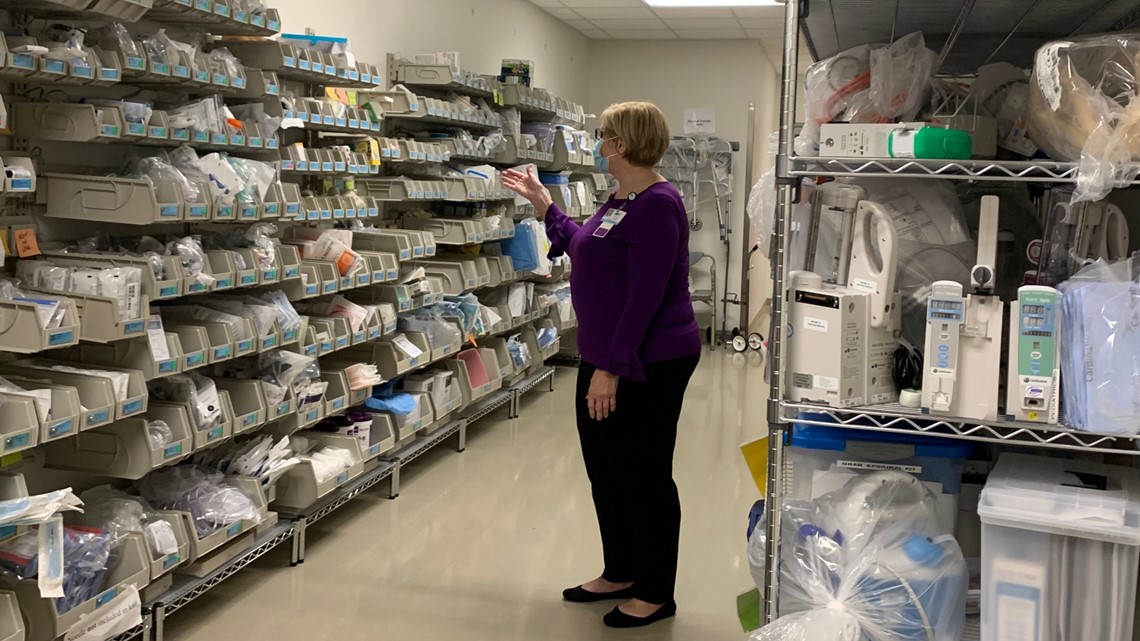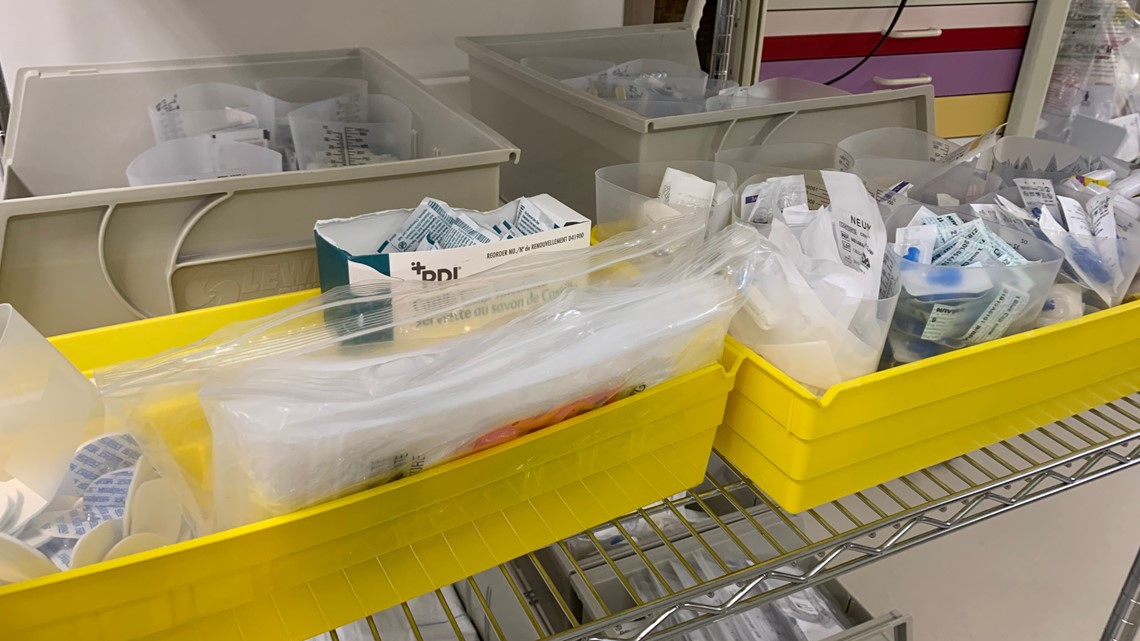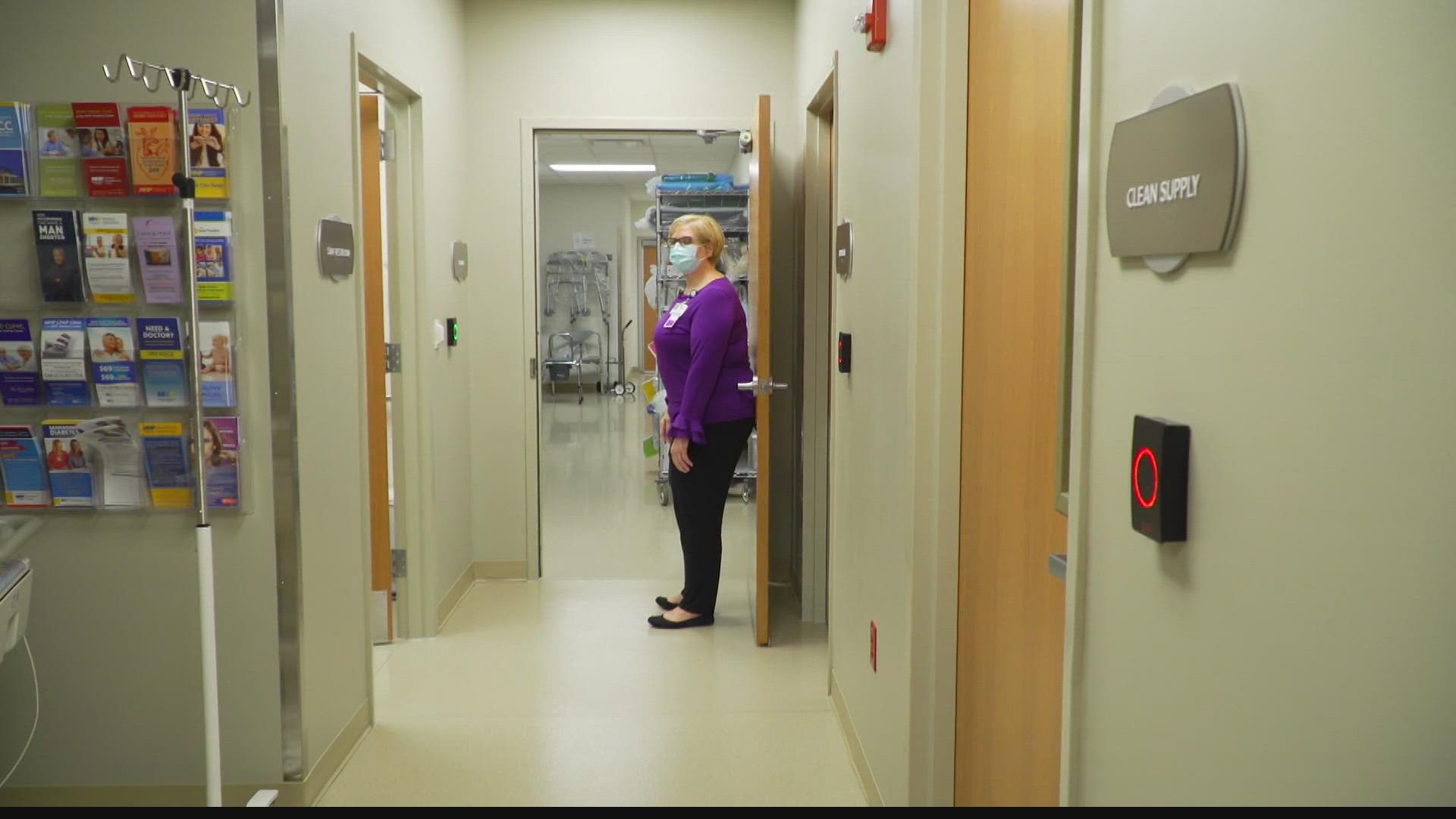SHELBYVILLE, Ind — A sudden and severe shortage of basic medical supplies is affecting some suburban Indiana hospitals and it's forcing at least one hospital to get very creative to get what they need to treat patients.
The supply chain issues couldn't come at a worse time, during another surge of COVID cases and as ICU beds max out.
Shelbyville's Major Hospital is full. Inpatient beds are all taken, with half of those patients COVID-19 positive. They're using a wing normally reserved for ambulatory care as yet another inpatient ward.
"Our ICU census has doubled and sometimes tripled from what we would have normally had pre-pandemic," said Linda Wessic, CNO/COO of Major Health Partners.
On top of that capacity crunch, the hospital now has a new pandemic problem: a shortage of basic medical supplies.
Bins in their storage room are suddenly going bare.
"These plastic pieces," Wessic pointed out in a supply storage room, "are pieces we're just seeing at random be unavailable. We don't have enough IV poles that we use for COVID infusions. These also have been a real challenge. These are tubes that you draw people's blood specimens in. We've totally run out of those at different times."


Bedside basins, insulin needles, surgical tape, plastic tubes for blood collection: all affected by supply chain issues.
Vendors suddenly tell the hospital they're out of stock. Scheduled deliveries of orders don't show.
Wessic said these are unpredictable outages, despite the hospital ordering materials long-term.
"It's very unpredictable. It's virtually they don't know until the day that 'Hey, it wasn't on the truck' or 'Hey, we didn't get it'. I've been a nurse for 40 years and in health care all that time," Wessic said. "Never thought that we'd have a day where we'd have to worry about whether or not we had a roll of tape to be able to secure an IV or that we would have a difficulty getting a bandage to put on a surgery patient. But we are."
Three weeks ago, for example, she said crutches were the issue. Their normal group purchasing and supply sources were all depleted.
The staff ended up having to make retail pharmacy runs on their way to and from work.
"So we were going out to the retail, hitting up CVS, hitting up Walgreens, hitting up local DME stores trying to find enough crutches to be able to meet the needs in our system," Wessic explained. "So something like that, which we're thinking that has nothing to do with the pandemic, but eventually it does because somewhere a factory or manufacturing organization creates crutches and they weren't meeting the supply."
Ordering from Amazon is also part of the gig here now – and it's costly to fill the gaps.
Don Barton, Major Hospital's director of supply chain management, said the hospital has had 10.3% increase in supply prices, on average.
"This is a dramatic impact when most rural hospitals are lucky to operate at a 3% margin," Barton said.


Wessic said several hospitals in the doughnut counties, including Hancock, Hendricks, Johnson and Rush, are facing similar shortages.
They've also been told it will get worse in the coming weeks.
Some factories in China will shut down for the Chinese New Year, which begins Jan. 31.
"I anticipate the worst is yet to come as raw material supplies are becoming harder to get for manufacturers, especially plastic resin, which so much of medical supplies are made out of," Barton said. "We will feel the impact of this come March to July 2022."
The solution for now: get creative with those non-traditional retail purchases. But they're also trying to conserve what they have.
"Only take what you're going to need into a patient room," Wessic said. "Use what you're taking out of the store room so that we can conserve as much as we can and not waste."
The hospital also searches for substitutes and alternative vendors to maintain items needed for staff and patient care.
Plus, they're trying to share supplies among hospitals when possible.
"It's been a challenge and it just requires those next steps: the additional time that most of our staff don't have to give at this point," Wessic said.

